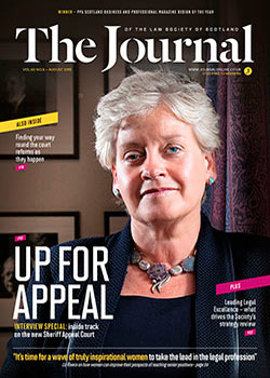Your price – what's on the menu?

"Nothing you do will ever feel good if you let people convince you that you have no choice." (Fiona Apple)
It is hard to think of a more irritating injunction than “Take it or leave it” (though “Sit back and relax” comes a close second).
Yet when it comes to price, “Take it or leave it” is most law firms’ starting position. They may move if pushed, sometimes further and faster than they intended, but offering choice as standard either does not occur to them, or is usually consigned to the “too difficult” box. This is a big mistake. If you opened the menu in a restaurant, to find only “Broth”, how long would you stay?
It is not that firms have only one approach to pricing. On the contrary, myriad alternatives exist and are often deployed. But much of the time they default to offering only one. Clients are not presented with a range of alternatives from which they can choose after an open, intelligent dialogue.
The firm that offers choice unprompted conveys a powerful message to clients that it is thoughtful about addressing their needs, wants to be transparent and recognises they have individual priorities and attitudes to risk which it wants to accommodate. It comes across as well managed, with a tight grip on data, processes and finances.
But choice can be perplexing. Clients need to feel they are making choices that are well informed. Responsibility for that lies unambiguously with their firms. Every pricing method brings a mix of benefit and risk. For example, the hourly rate may turn out to be cheaper than a fixed fee, but it may also be much more expensive, and that uncertainty is its major downside. Conversely, fixed fees may satisfy clients whose overriding need is certainty, but they may pay dearly for the privilege. They may also end up paying more than they bargained for if a job exceeds scope, at which point certainty becomes illusory. No-win, no-fee, eliminates cost entirely in the event of failure, but sometimes at the expense of a disproportionate reward for success. Clients need to be guided carefully to a choice that is right for their circumstances and mindset, while giving firms a fair margin.
The final say
They may find a choice especially attractive and reassuring if the firm has its own cash on the line. When in practice, I was involved in negotiating and managing many contracts with large institutions. Central to all of them was the direct link between demanding service standards and reward. If the firm did not meet the standards, it was penalised, and there was always the threat that if it fell short too often it would be kicked out. SLA could mean not just “service level agreement”, but “stress, losses and anxiety”. I can attest from vivid personal experience the truth of Dr Johnson’s remark to Boswell: “Depend upon it, Sir, when a man knows he is to be hanged in a fortnight, it concentrates the mind wonderfully.”
But look at this from the other end of the telescope. Does an offer from the firm to link its reward to performance concentrate wonderfully the mind of the client? The evidence is that it does, in a way wholly beneficial to firms confident enough to make it and good enough to deliver. One of the best known examples is the Chicago litigation specialist Valorem, which has pioneered the value adjustment line. On each of its bills, there is a space for the client to adjust the figure up or down as it sees fit – a massive statement of confidence in the firm’s ability, which has made an enduring contribution to its success. A variant for the less valiant might be to offer a capped discount for falling short – typically 15-25% of the fee.
Firms must tread carefully here, and careful scoping is essential. But fortune favours the fearless, provided they back up their promises with performance. The cynical may worry that clients will be artificially critical so as to chisel a fee reduction, but experience shows this rarely happens. Clients value their relationships with good firms and recognise they would not survive that kind of behaviour.
In a previous piece, I referred to David Maister’s insight: “There is no secret to value billing. Just figure out ways to be more valuable, then you’ll get paid more.” There are few things clients value more than feeling that the price they are paying has been agreed in a process where they have genuine choice and a measure of control. Firms with the imagination to offer it, and the rigour to harness it, will always outgun those who insist on the set menu and have no à la carte.
In this issue
- A touch of EVEL
- Dad or undad: liability for paternity fraud
- FAIs – for what purpose?
- Too late to change your mind?
- Reading for pleasure
- Opinion: Beverley McLachlin
- Book reviews
- President's column
- Examination question
- People on the move
- Sheriffdom of Scotland
- Loans and financing throughout your career
- Courts reform: we have lift-off
- 2020: a changing prospect
- Purpose-driven women
- Under the hammer
- Sentencing shifts?
- Holiday headaches
- Married to the land?
- Rights before the regulator
- Time to get your pensions house in order
- Scottish Solicitors Discipline Tribunal
- Digesting the Community Empowerment Act
- Advice on tap
- Epilepsy training DVD helps spot the signs
- Law reform roundup
- From the Brussels office
- Your price – what's on the menu?
- Double danger
- Ask Ash
- Courts: the when and how
- Complaints go online
- What happens in Vegas, stays in Vegas
- Pro bono: a helping hand






